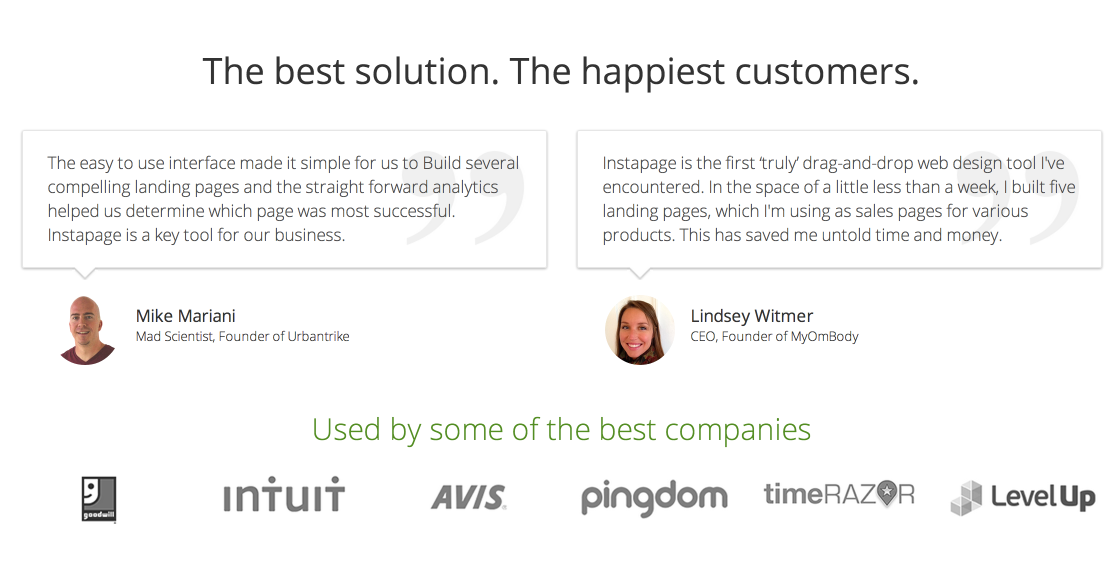Landing Page Construction Kit — Part 3: inform and educate
Breadcrumb
- Home
- PronovixBlog
- Landing Page Construction Kit — Part 3: inform and educate
In part 1 and 2 of this series we talked about how to clearly define all aspects of your offering and write targeted sales copy. Now in the last part we want to zoom in on informing and educating your potential customers so that they can confidently decide for using your product or service.
We are building a mailing list for business people interested in founding IT startups. We’ll send you practical tips and free resources (like the landing page construction kit this series is based on) to help you experiment with rapid prototyping of digital businesses.
Get the landing page construction kit!
You’ve grabbed the attention of your potential customers with your headlines and call-to-actions, but now you have to educate them about everything they need to understand before they can truly grasp the value of your product. Explore and explain any misconceptions or information gaps that need to be addressed before your customer will be ready to commit to a purchase. This section can be a bit longer if needed, but keep the copy tight and clear.
A lack of information or difficulties with comprehension can be huge obstacles in the decision making process, so make sure you know your potential customers well enough to offer the explanations they need.
As you know your offering in and out, it can be hard to imagine what it looks like to someone who sees it for the first time. Try to get feedback early on! Show your copy to friends, family and co-workers, and ask them how they understood it. Test the copy or the first version of your landing page with the target audience by all means. Go to or organize meetups, seek them out at conferences and get them to take a look. The insights you can gain this way will be extremely useful for optimizing your copy.
As you’ve identified your target audience, you can probably identify a group of people who definitely won’t need your product or who you won’t be able to serve. Being open about this issue makes your communication more honest and trustworthy. Add a “This is not for you, if” section to your landing page to keep your focus on the target group.
You want potential customers to decide for engaging with the landing page, but they won’t do it until they are absolutely sure it’s a good deal for them. Diminish their concerns by addressing their objections and displaying social proof.
During your research about the target audience, you encounter questions and objections from potential customers that you should address on the landing page. Add a Frequently Asked Questions section that you continuously update as more feedback becomes available. Keep the copy natural, use the expressions you’ve actually heard from customers.
Example:

Recommendations from other people have a huge persuasive effect on site visitors. If visitors see people speaking positively about your product, they are more likely to think positively about it as well.
You can add social proof to a page in a variety of ways:
Use testimonials from real people most relevant to your target audience. Display their full names and photos — showing them as real persons builds trust and connection. Make sure what they say sounds natural, avoids generalities and talks about how your service benefitted them.
Example:

This wraps up our blog post series about what we’ve learned while building landing pages for different products and startups.
To create our template and this series we’ve condensed a lot of information from different places. Most of the advice we found talked about only parts of the process or had eye-catching but less practical listicles. We found that by paying attention to the aspects we discussed, we can create landing pages more and more efficiently.
Making a good landing page is not easy, we hope this blog post series can help you get through the process faster!

Diána is a Senior Technical Writer at Pronovix. She is specialized in API documentation, topic-based authoring, and contextual help solutions. She writes, edits and reviews software documentation, website copy, user documents, and publications. She also enjoys working as a Program Monitor for NHK World TV and Arirang TV. She graduated as a programmer, then went on earning system administrator and system analyst and designer degrees. She's fluent in English and German, and worked as a translator for a publishing company translating books from German to Hungarian. She's the Hungarian translator of Basecamp. Before becoming a writer, she worked with international clients like Sony Pictures Television, Da Vinci Learning and The Walt Disney Company as a key account manager in integrated marketing campaigns focusing on digital media.
Articles on devportals, DX and API docs, event recaps, webinars, and more. Sign up to be up to date with the latest trends and best practices.

